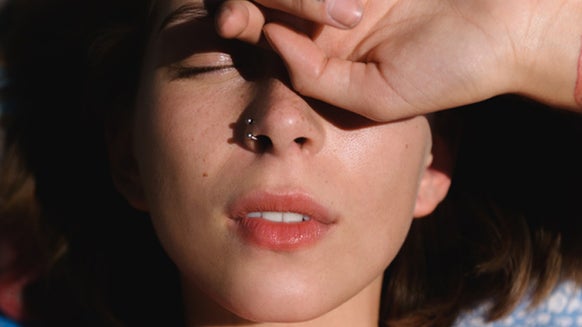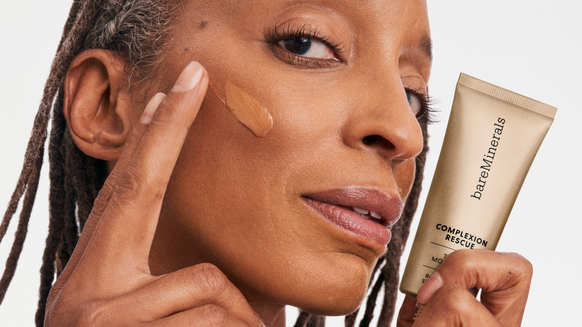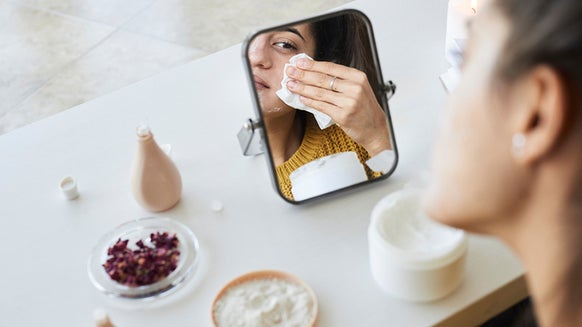Why Meditation Should Be Part of Your Anti-Aging Regimen
We live in an increasingly aging country. In 1996, ages greater than 65 years old constituted just over 13% of the American population; by 2030, that percentage will nearly double (1). It’s no wonder that cosmetic procedures that aim to reverse or at least delay signs of aging continue to rise (Fact: In 2014, Americans spent $12.9 billion on cosmetic procedures alone.) This just shows how important having youthful skin is in our society today.
For today’s article I’d like to focus on a different approach to aging skin: meditation. As both a dermatologist in my residency and a yoga instructor having lived in Bali, I find the relationship between skin and mindful meditation interesting and of great importance, especially in today’s high-strung society. As my previous article on the benefits of yoga on skin described, this is all due to how the mind, body and skin interact. I will explain that part in a bit, but first let’s discuss what meditation is.
Simply put, meditation is the practice of quieting the mind and focusing on the breath. It’s not as easy as it sounds, especially in today’s highly connected society. It takes a lot of openness, patience and practice. There are several types of meditation, here are the most popular types:
Mindfulness Meditation: Focuses on awareness of the sounds and activities in your environment at a given time. You let your mind be aware of the sounds without becoming too focused. This can be done sitting still or walking (I personally do it walking through a garden). Mantra (Transcendental) Meditation: Mantras are words that are chanted loudly during meditation. As you may already be familiar with in yoga, the mantra “Om” is regularly used as it delivers a deep vibration, making it easier for the mind to concentrate. Spiritual Meditation: This involves communicating with a higher being—a prayer, for instance. It is frequently focused on a question or problem you might have. Focused Meditation: As the name described, this type of meditation focuses on a sound, object, mantra or thought. Focusing on one thing allows the other million things running through your head to clear out.
Both anecdotally and scientifically, meditation has been described to reduce stress, improve concentration, increase self-awareness, benefit cardiovascular and immune health and slow aging, to list just a few benefits. While meditation should not be your only anti-aging regimen, these studies suggest just how important and substantial the effects are.
- Meditation slows brain activity, which allows for healthier brain cells.
One of the other biggest things that happens to our brains when we meditate is that it stops processing so much information, as was proven in a study using using magnetic resonance imaging (MRI). (4) Dr. Sarah Lazar, a Harvard neuroscientist, has done studies reporting that meditators have more gray matter in the brain, which means more brain cells—a fact that could be related to people having more compassion, lower blood pressure and increased memory, among other things.
Meditation lowers stress levels. Several researchers have described the role of psychological or emotional stress in the acceleration or exacerbation of the aging processes. Oxidative stress is considered a primary culprit of aging in many leading theories of aging. (6-9) Many studies have proven reduced oxidative stress during meditation as measured by reduced levels of lipid peroxides, malondialdehyde concentration and urinary vanillylmandelic acid levels. The reduction of these oxidative stress levels has been hypothesized to reflect a slower rate of aging by way of our innate reparative and regenerative processes. (9-12)
- Meditation increases telomerase activity.
We have telomeres at the end of our chromosomes that get shorter and shorter over time (i.e., the cause of aging and eventual death). Telomerase are enzymes that prevent the shortening of telomeres and are known to decrease with age, which makes them a reliable marker of long-term well-being. Studies have shown that the increased telomerase activity and stem cell count in our blood may lead to increased longevity and better quality of life, especially later on. (5)
- Meditation calms inflammation.
Numerous studies on meditation and meditation-like practices (yoga, self-hypnosis, systematic stylized forms of relaxation, etc.) have also showed anti-inflammatory effects and dampening of inflammation-like immune processes. (13)
There are so many different types of meditation, and choosing the “best” one is based on which type resonates the most with each individual. My recommendation would be meditation or hatha yoga a few times a week (if not every day), even just for 15 minutes. If you have never tried this and are hesitant to join a class, there are several smartphone apps to help guide you through meditation, especially if it is hard for you to initially sit still and clear your mind. Other things to remember for retaining or achieving that young and vibrant look are a good night’s sleep, hydration with water, a healthy diet, regular exercise and sun protection.
Disclaimer: Statements and opinions in this article should not be taken as medical advice as they are not intended to diagnose, treat or prevent any disease. The opinions and content provided are not affiliated with my employer or any of the medical societies or journals of which I am a part. Although I am a Yoga Alliance Registered Yoga Teacher, always consult your own physician or health care professional before starting any health and fitness regimen.
- Perry, D. (1999). Healthy aging in the national interest: The politics of research. In K. Dychtwaldb (Ed.), Healthy aging: Challenges and solutions. Gaithersburg, MD: Aspen.
- Americans Spent How MuchMoney on Cosmetic Procedures in 2014? 10 Mind-Blowing Plastic Surgery Facts—Take a Look! E News. https://www.eonline.com/shows/botched/news/703125/americans-spent-how-much-money-on-plastic-surgery-10-mind-blowing-plastic-surgery-facts-take-a-look). Accessed Jun 2, 2016.
- Dale H. How to Meditate When You Don’t Have a Clue. Pop Sugar. https://www.popsugar.com/fitness/5-Types-Meditation-18949375. Accessed 30 June 10, 2016.
- Mindfulness meditation training changes brain structure in 8 weeks. https://www.massgeneral.org/about/pressrelease.aspx?id=1329. Accessed June 10, 2015.
- Rao KS, Chakraharti SK, Dongare VS, Chetana K, Ramirez CM, Koka PS, Deb KD. Antiaging Effects of an Intensive Mind and Body Therapeutic Program through Enhancement of Telomerase Activity and Adult Stem Cell Counts. J Stem Cells. 2015;10(2):107-25.
- Mcewen BS. Stress and the aging hippocampus. Front. Neuroendocrinol. 1999; 20: 49–70.
- Sapolsky RM. et al. The neuroendocrinology of stress and aging: the glucocor- ticoid cascade hypothesis. Endocr. Rev. 1986;7: 284–301.
- Frolkis VV. Stress-age syndrome. Mech. Ageing Dev. 1993;69: 93–107.
- Gredilla Barja. Minireview: the role of oxidative stress in relation to caloric restriction and longevity. Endocrinology.2005; 146: 3713–3717.
- Bushell WC. Evidence that a specific meditational regimen may induce adult neurogenesis [abstract]. Devel. Brain Res. 2001;132:
- Bushell WC. Model: Potential cognitive-behavioral stem cell activation in multiple niches [poster]. Presented at the Stem Cell Biology & Human Disease conference, UCSD/Salk Institute/Nature Medicine. La Jolla, CA. March 17, 2005.
- Kim, DH et al. Effect of Zen meditation on serum nitric oxide activity and lipid Prog. Neuropsychopharmacol. Biol. Psychiatry.2005; 29: 327–331.
- WC Bushell. From Molecular Biology to Anti-aging Cognitive–Behavioral Practices: The Pioneering Research of Walter Pierpaoli on the Pineal and Bone Marrow Foreshadows the Contemporary Revolution in Stem Cell and Regenerative Biology. Ann. N.Y. Acad. Sci. 1057: 28–49 (2004)

From the latest hair and makeup trends to the best solutions for your skin issues, we've got all your beauty concerns covered!
Related Posts

How Everyday Stressors Can Cause Skin Aging—and What You Can Do About It






